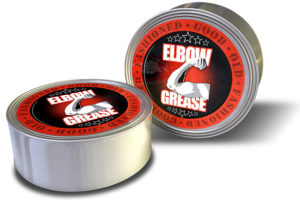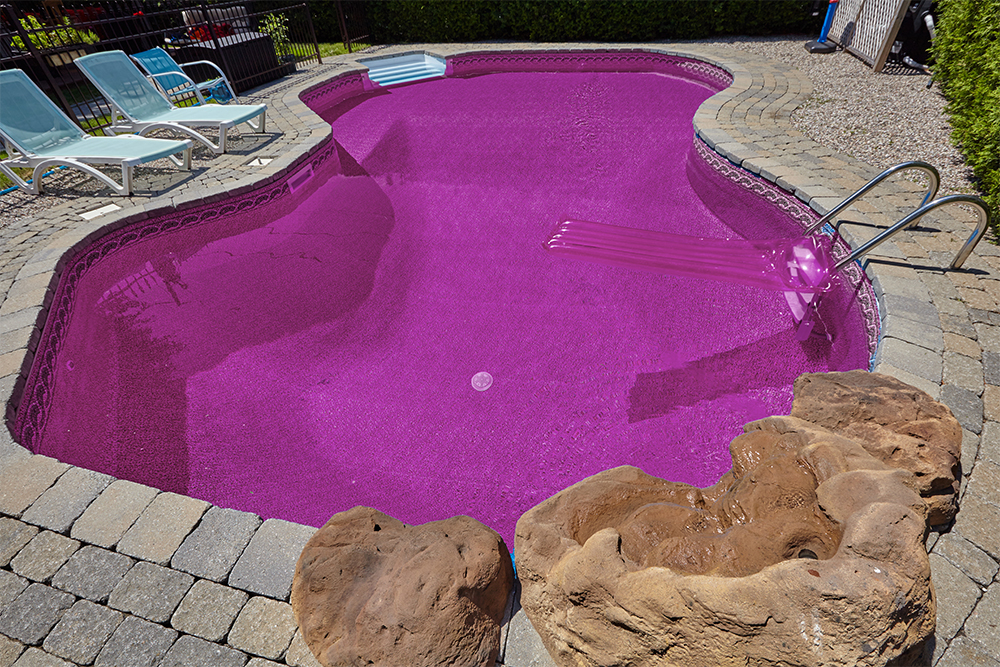As a pool owner, there are many problems that arise from maintaining your backyard pool. We’ve seen it all. Our team knows the differences of all kinds of problems and how to best solve them for you. In this blog, we’re going to discuss the main problems and how to overcome them. Throw on your gloves; we’re about to get dirty and kill algae, pool dirt, slime and pool grime.
Pink Slime
To be fair, pink slime doesn’t occur only in your pool. It can show up in your toilets, sinks, and bathtubs as well. If you’ve ever seen an orange stain around your toilet water line, that is pink slime (also known as pink algae). It’s one of the most resilient types of algae that can grow in your pool. Believe it or not, it’s not actually algae; it’s a tough bacteria that doesn’t respond well to algaecides. Pink algae often appears in pools when there’s not enough sanitization. Don’t worry: pink slime isn’t harmful to humans, but it can be very nasty to deal with. Here’s what you need to know about getting rid of it and then preventing it!
Stock Up On Elbow Grease
 The first thing to do is manually clean anything that has pink residue on it. More often than not, this is our job and our clients call us when they see too much pink. If you don’t have a pool maintenance company in your rolodex, you’ll need to use some good old fashioned elbow grease. Beware: if you see pink algae around your pool ‘s edge, it’s also likely to be found in your filter, your jets, on your ladders and so on. Take the time to find and remove as much of it as possible. Don’t worry about completely eradicating it from your pool immediately.
The first thing to do is manually clean anything that has pink residue on it. More often than not, this is our job and our clients call us when they see too much pink. If you don’t have a pool maintenance company in your rolodex, you’ll need to use some good old fashioned elbow grease. Beware: if you see pink algae around your pool ‘s edge, it’s also likely to be found in your filter, your jets, on your ladders and so on. Take the time to find and remove as much of it as possible. Don’t worry about completely eradicating it from your pool immediately.
Shock Your Pool
Your next step should be to shock your pool. You might actually want to do this a few times in a row. Better yet, if you use chlorine, use a higher dosage of chlorine shock than normal. Why? Pink algae is very resistant to chemicals; you can only kill it if there is an excess of chlorine present.
Filter Your Pool & Test The Waters
Leave your pool’s filter running for a minimum of 24 hours. It’ll help in the removal of the extra chlorine and any bacteria still lurking in your pool. After filtering, you should clean your filter system again. After you’ve run your filter system, test your water to make sure it has returned to the right balance.
Taking these steps will help you get rid of the pink algae. It’s worth explaining how you can prevent it from growing back again. It starts with chlorine (for most, that comes in at 3 ppm). Schedule time to regularly brush and vacuum your pool. To stay ahead of the curve, we suggest brushing and vacuuming twice a week (or hiring an aquatic care company to handle it for you!)
In Conclusion
Start with the chlorine. If you see this slime, it’s clear you don’t have enough chlorine (or your pH levels are too high or too low). Shocking should kill the bacteria and help you stabilize your pool’s water levels, but you have to manually remove as much of the pink slime as you can, too, to prevent it from reaching a critical mass in population and taking over your pool again.
The Ring Of Pool Grime
We’ve all seen a pool that might have clean-looking water, but it’s an illusion. Unknowing pool owners spend hours every week on their hands and knees, trying to scrubbing away at this ring with a pumice stone. They believe it forms after a decade of use. Truthfully, it can form as early as 2 years after pool installation. Scrubbing will not remove that ring of grime.
The Causes
Most grime rings are caused by organic waste in your water, which can range from sunscreen to natural oil excreted by the body (especially in hot weather) to dirt, leaves and other natural environmental factors. These rings are frustrating as they are unavoidable. Once the grime builds up, when you lose water through evaporation or otherwise, the grime naturally sticks to the side of your pool.
Grime Ring Removal
Scum of this magnitude is particularly attracted to porous surfaces, such as your pool’s finish or the tile itself. Removing the grime can seem impossible, unless you use a product that is designed for it. to help remove the scum from the pool. Look for a product that is specifically designed for this grime ring without seriously affecting the balance of chemicals in your water or damaging the pool itself. Add some elbow grease into the process, and know it will go much faster.
Nota Bene
There is no way to avoid this grime ring. Even by running your filter constantly, there will still be scum buildup on the edges of your pool. Chlorine can only do so much to break down the organic matter that enters your pool. Regularly cleaning the grime ring is the best ways to prevent it from becoming a permanent fixture in your pool. Consider adding an enzyme to your pool that breaks down waste naturally built up in your pool. Brush the sides of your pool regularly, keep your chemicals balanced and you’ll have less to pool grime worry about.
Erik’s Aquatic Care is always here to answer questions you may have as a current or future pool owner. Cheers!

